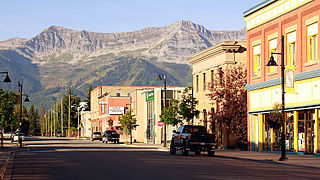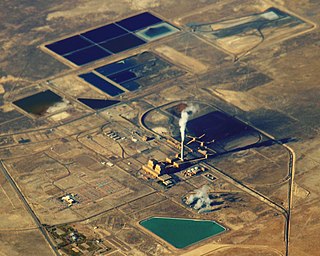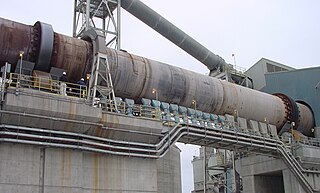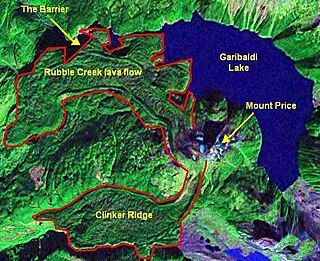
A cement is a binder, a chemical substance used for construction that sets, hardens, and adheres to other materials to bind them together. Cement is seldom used on its own, but rather to bind sand and gravel (aggregate) together. Cement mixed with fine aggregate produces mortar for masonry, or with sand and gravel, produces concrete. Concrete is the most widely used material in existence and is behind only water as the planet's most-consumed resource.

Portland cement is the most common type of cement in general use around the world as a basic ingredient of concrete, mortar, stucco, and non-specialty grout. It was developed from other types of hydraulic lime in England in the early 19th century by Joseph Aspdin, and is usually made from limestone. It is a fine powder, produced by heating limestone and clay minerals in a kiln to form clinker, grinding the clinker, and adding 2 to 3 percent of gypsum. Several types of portland cement are available. The most common, called ordinary portland cement (OPC), is grey, but white Portland cement is also available. Its name is derived from its resemblance to Portland stone which was quarried on the Isle of Portland in Dorset, England. It was named by Joseph Aspdin who obtained a patent for it in 1824. His son William Aspdin is regarded as the inventor of "modern" portland cement due to his developments in the 1840s.
Three Sisters may refer to:

Fernie is a city in the Elk Valley area of the East Kootenay region of southeastern British Columbia, Canada, located on BC Highway 3 on the western approaches to the Crowsnest Pass through the Rocky Mountains. Founded in 1898 and incorporated as the City of Fernie in July 1904, the municipality has a population of over 5,000 with an additional 2,000 outside city limits in communities under the jurisdiction of the Regional District of East Kootenay. A substantial seasonal population swells the city during the winter months.

Crowsnest Pass is a low mountain pass across the Continental Divide of the Canadian Rockies on the Alberta–British Columbia border.
Black Mountain may refer to:

Mount Fairweather, is the highest mountain in the Canadian province of British Columbia, with an elevation of 4,653 metres (15,266 ft). It is located 20 km (12 mi) east of the Pacific Ocean on the border of Alaska, United States and western British Columbia, Canada. Most of the mountain lies within Glacier Bay National Park and Preserve in the City and Borough of Yakutat, Alaska (USA), though the summit borders Tatshenshini-Alsek Provincial Park, British Columbia (Canada). It is also designated as Boundary Peak 164 or as US/Canada Boundary Point #164.
Blue Mountain may refer to:
Twin Peaks is an American television series, running from 1990 to 1991; and in 2017.
Peak or The Peak may refer to:
Humphry is a masculine given name and surname. It comes from the Old Germanic name Hunfrid, which means "friend of the hun". The name may refer to:

Bottom ash is part of the non-combustible residue of combustion in a power plant, boiler, furnace or incinerator. In an industrial context, it has traditionally referred to coal combustion and comprises traces of combustibles embedded in forming clinkers and sticking to hot side walls of a coal-burning furnace during its operation. The portion of the ash that escapes up the chimney or stack is, however, referred to as fly ash. The clinkers fall by themselves into the bottom hopper of a coal-burning furnace and are cooled. The above portion of the ash is also referred to as bottom ash.

Mount Price is a small stratovolcano in the Garibaldi Ranges of the Pacific Ranges in southwestern British Columbia, Canada. It has an elevation of 2,049 metres and rises above the surrounding landscape on the western side of Garibaldi Lake in New Westminster Land District. The mountain contains a number of subfeatures, including Clinker Peak on its western flank, which was the source of two thick lava flows between 15,000 and 8,000 years ago that ponded against glacial ice. These lava flows are structurally unstable, having produced large landslides as recently as the 1850s. A large provincial park surrounds Mount Price and other volcanoes in its vicinity. It lies within an ecological region that surrounds much of the Pacific Ranges.

Cement kilns are used for the pyroprocessing stage of manufacture of portland and other types of hydraulic cement, in which calcium carbonate reacts with silica-bearing minerals to form a mixture of calcium silicates. Over a billion tonnes of cement are made per year, and cement kilns are the heart of this production process: their capacity usually defines the capacity of the cement plant. As the main energy-consuming and greenhouse-gas–emitting stage of cement manufacture, improvement of kiln efficiency has been the central concern of cement manufacturing technology. Emissions from cement kilns are a major source of greenhouse gas emissions, accounting for around 2.5% of non-natural carbon emissions worldwide.

Clinker Peak is a peak on the shoulder of Mount Price in the Garibaldi Provincial Park in British Columbia, Canada. It is a stratovolcano in the Garibaldi Volcanic Belt, part of the Clinker Ridge on the west side of Garibaldi Lake. Clinker Peak is considered a volcanic vent of Mount Price, and produced two large lava flows approximately 9,000 years ago, that ponded against the retreating continental ice sheet and formed The Barrier, containing Garibaldi Lake. Clinker Peak is about 9.5 km (5.9 mi) from the abandoned settlement of Garibaldi. The nearest populated areas are Squamish, 25 km (16 mi) to the south, and Whistler 23 km (14 mi) north.

Clinker is a generic name given to waste from industrial processes, particularly those that involve smelting metals, welding, burning fossil fuels and use of a blacksmith's forge, which commonly causes a large buildup of clinker around the tuyere. Clinker often forms a loose, dark deposit consisting of waste materials such as coke, coal, slag, charcoal, and grit. Clinker often has a glassy look to it, usually because of the formation of molten silica compounds during processing. Clinker generally is much denser than coke, and, unlike coke, generally contains too little carbon to be of any value as fuel. It is also applied to the byproduct of combustion annd heating by those who use Anthracite or lignite coal-fired boilers.
White Portland cement or white ordinary Portland cement (WOPC) is similar to ordinary, gray Portland cement in all aspects except for its high degree of whiteness. Obtaining this color requires substantial modification to the method of manufacture, and because of this, it is somewhat more expensive than the gray product.

Clinker Ridge is a mountain ridge in southwestern British Columbia, Canada, located between Garibaldi Lake and the Cheakamus River. Named for Clinker Peak on the western flank of Mount Price, this ridge is one of the two large lava flows from Clinker Peak that ponded against an ice sheet about 9,000 years ago.
Mission Ridge may refer to:
Ember is glowing hot coals from carbon-based material.










